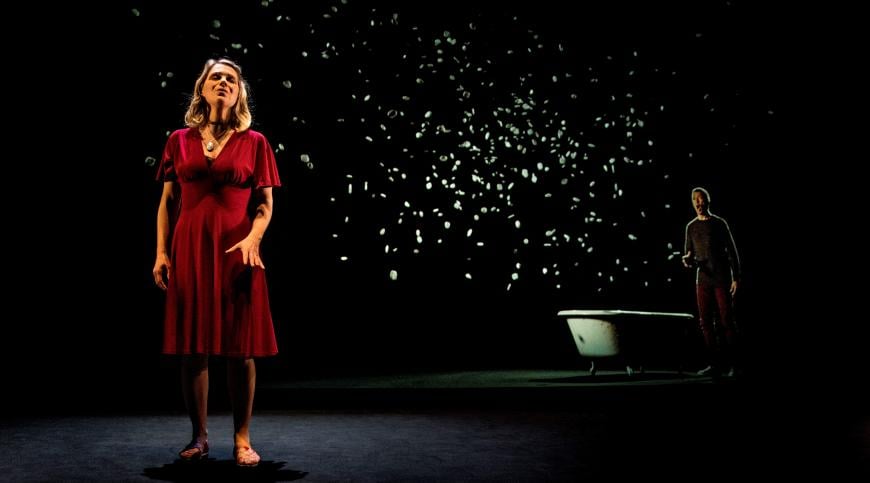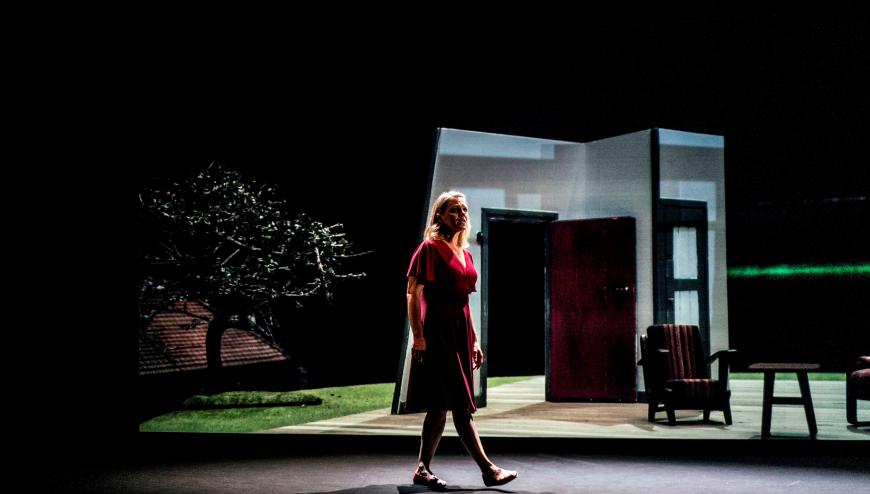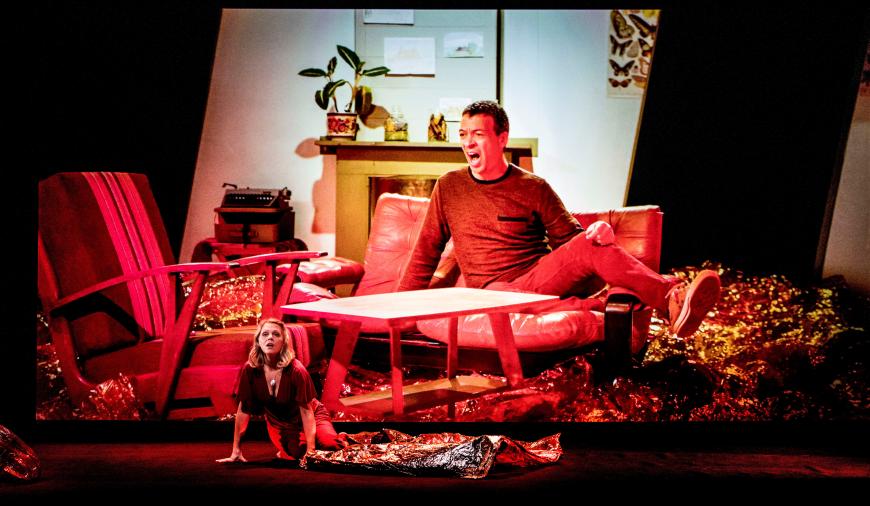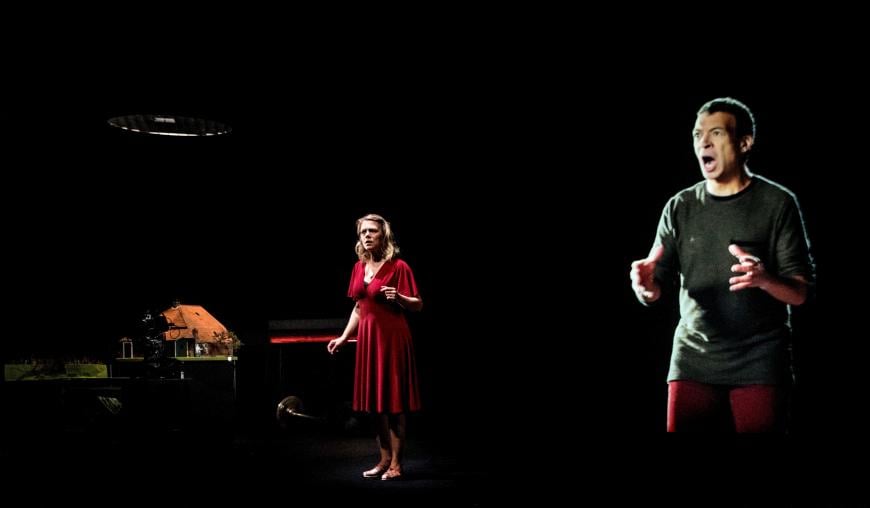
A woman in a red dress stands alone on a stage. Behind her, there’s a movie screen, and at the far side of the stage to her right, a table, some lights, and some electronic equipment are visible. She starts to sing individual words and phrases, which coalesce, eventually, into full sentences. Eventually, her double appears on a screen behind her, and she’s now singing a duet with herself. Another double appears, and now she’s singing a trio.
And eventually, the live singer moves to the side of the stage and starts to manipulate objects on a table. Stones, a miniature sofa, the walls of a toy house — as she works, they’re projected on the screen, and you realize that the electronic equipment includes a camera.
Is there a plot? There is, but it emerges slowly. You realize that the Woman, as she’s simply known, is singing about her child, a little boy, and that one day, wading in the sea near their house, he went too far, farther than he was allowed. A wave washed over him, and he drowned.

She describes their life together and returns to the table to add more parts and furniture to the house on it. The screen changes to display film of the real house and the land around it — and the grown Man exploring its exterior.
He begins to sing, and he enters and moves around the interior of the house, recalling his life there. Eventually you realize that he is the boy of whom the Woman sings and that the Woman, his mother, died while rescuing him from drowning. He remembers his steps past where he was allowed and how taking them changed his life forever.
You rarely find a work as brilliantly conceived and executed as Michel van der Aa’s Blank Out, which had its West Coast premiere at Cal Performances on April 28 and 29 as part of the Illuminations: “Human and Machine” series. Blank Out is not exactly a one-man production, but van der Aa created the libretto, wrote the music, and directed both the film and stage action.

The libretto is described this way by the publisher: “Libretto and film script by Michel van der Aa, based on texts by Ingrid Jonker in a translation by Antjie Krog and André P. Brink.” Jonker wrote in Afrikaans and took her own life in 1965 by walking into the sea. Although Cal Performances’ synopsis says that the story is not biographical, Jonker’s death by drowning is surely a profound connection to Blank Out.
Over the course of Blank Out, the Woman and the Man don’t quite interact, but seeing them together, one live and one on film, lets the audience imagine their interactions. The Woman sings of the stones her son accumulated, which held down his towel at the beach. The Man finds a bathtub full of stones in the house. In the film, the Woman places small stacks of stones around the Man, though she never knew her son as an adult. As characters in Blank Out, they have a relationship that never was, even as each grieves the imagined death of the other.
Because of Blank Out’s structure, its cast is fixed; unless the film is remade, only soprano Miah Persson and baritone Roderick Williams will ever perform it. Both are dramatically and vocally superb, Persson with a voice of radiant beauty, Williams with an unusually bright-toned and tender baritone.

Van der Aa’s vocal writing fits each singer superbly and was surely tailored to their vocal strengths and character. Persson and Williams are both deeply expressive, vocally and physically, with clear diction. They make sense, always, of the fragmented, repetitive text of this elusive libretto.
Van der Aa writes beautifully and with intense drama for the voice, with arching lines and aching harmonies, sometimes consonant, sometimes dissonant, always dramatically appropriate. Sometimes the melismatic vocal lines suggest Renaissance music. His score isn’t just for the two singers. A synthesizer and other instruments provide part of the prerecorded soundtrack, and so does the Nederlands Kamerkoor (Netherlands Chamber Choir), conducted by Klaas Stok.
While the film requires that audience members wear 3D glasses, its 3D effects are comparatively subtle and well integrated with the text and music, never gimmicky. Blank Out is a masterpiece and a work that shows what is possible when technology meets and enhances art.




